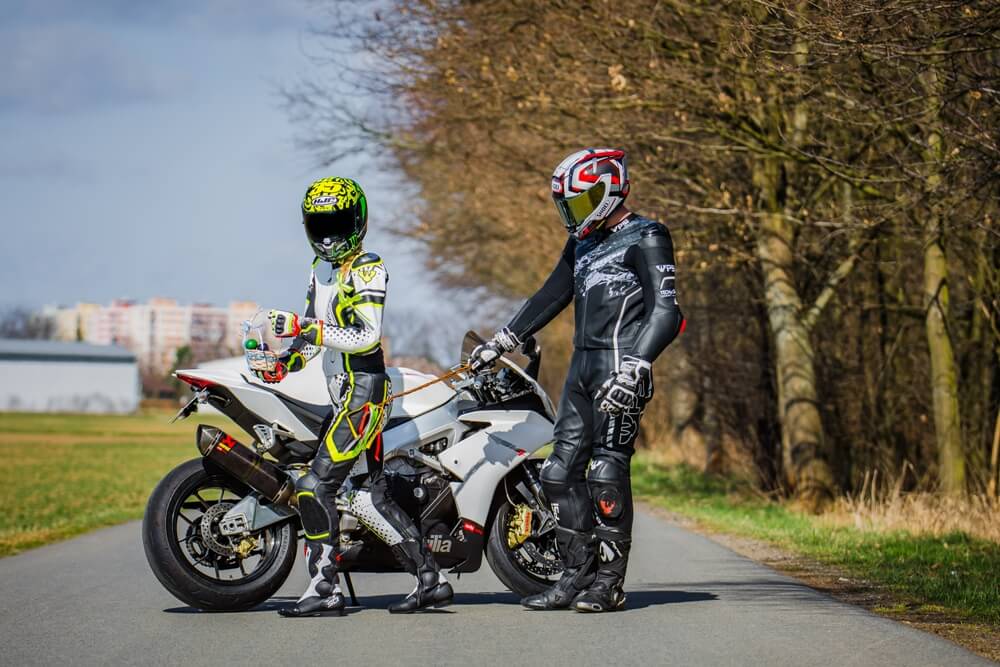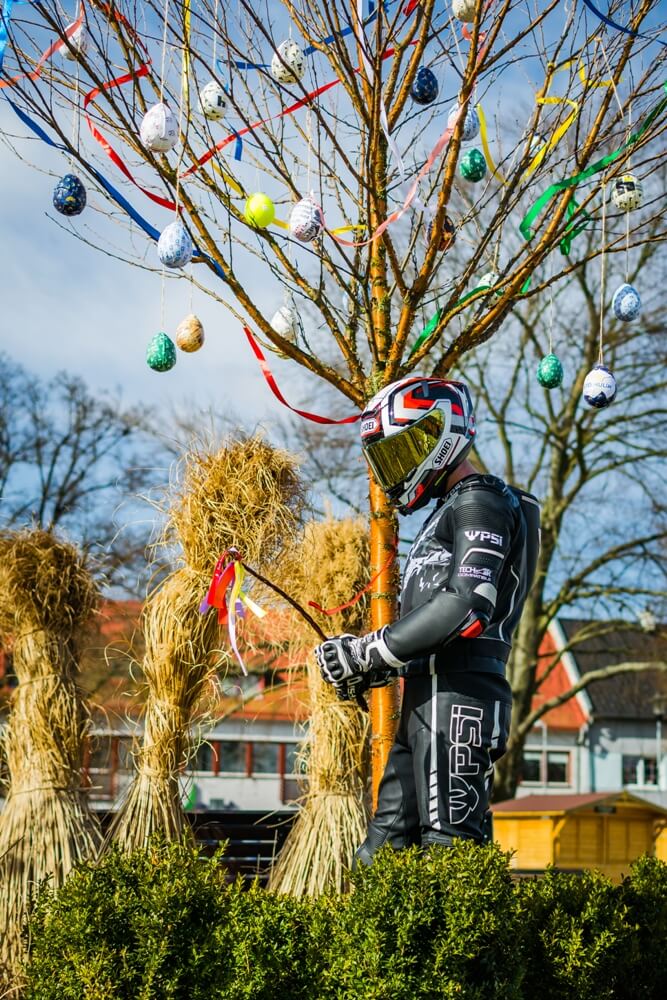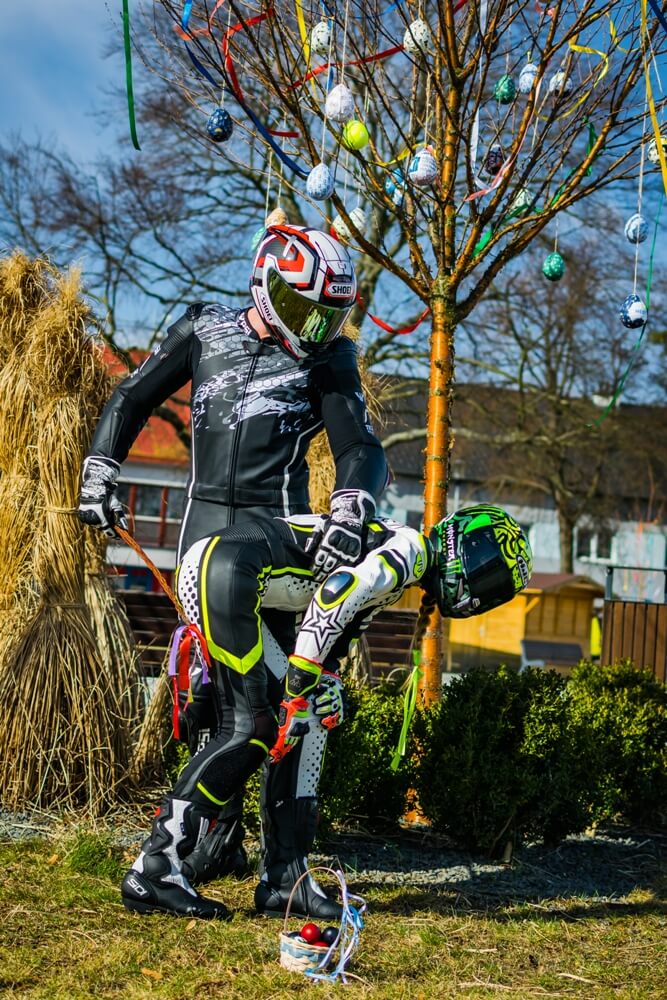The arrival of spring is often associated with the traditional Easter holidays. A time where some worship the story of Jesus, or maybe celebrate the annual rebirth of nature. If the weather plays nicely then we will also go for those first runs of the riding season. It’s a time where we should think about how to get ready and prepare for the biking months ahead.
When is the time for the first spring ride anyway?
There is, of course, the obvious, when the weather starts to get better and the days noticeably begin to lengthen, after the spring solstice on March 21st. This brings not only the increased light, which is invaluable for the visibility of the biker on the road but also a surge in some kind of solar energy, which draws us to “get on the gas” again, and finally roll out of the garage. It is prudent, however, to not just jump in with both feet straightway.
So, what should we be considering for these rides after the winter?
First of all, rather than thinking about our top performance we should mentally get ourselves back in to the riding mindset for the season ahead. Thanks to the still cool temperatures, and dirty tarmac after the winter, the notion of “getting the knee down”, or similar should not be in anyone’s head. We should realise that car drivers need to get used to seeing faster moving bikes on the road again. Constant use of, or flashing, headlamp high beams at them is not going to make us better accepted, at any time during the season. So, consider what else you can do to be better seen at all times without annoying others.
In that case then, what can be done to be better seen, especially in spring?
In general, there are more fluorescent colours available in motowear, which is a fashionable trend at this time. For those who prefer more conservative tones, there is the option of incorporating grey, or black, retroreflective strips in to garments, that still keeps the overall tone. Another possibility is the latest technology of SCILIF SUNFIBRE, which is a side radiating, flexible light guide sown in to the seam of a garment. It is illuminated with a high efficiency light emitting diode, controlled by its own microprocessor, incorporated into a small, rechargeable battery power pack. The fibre has two illumination levels, as well as the facility for constant or flashing light modes. The biggest advantage of the system is its illumination range of up to 1.5km.
Check out the Brilla range, with incorporated SCILIF SUNFIBRE technology.
How else can we prepare for riding again?
As well as readying the bike we also need to prepare ourselves. It should not be forgotten that riding a motorcycle is a physical activity, though the level of effort put in is different for each person. After the long winter months, it is normal that we want to move ourselves again, and deal with those extra pounds that are so often put on over the Christmas, and Easter, holidays. So here we approach the first challenge, putting our riding gear on for the first time after the winter biking hibernation!
What is the deal with putting the suit back on for the first time?
Putting a suit back on, for the first time, after the winter may not always be so straight forward, even if you have maintained your weight. Therefore, we recommend that you do it in advance of that initial ride, and give yourself a little bit of time. Bring the suit in to the house, out of the cold of the garage, if that is where it has been stored. Did you know, for example, that memory foam protectors react to cooler temperatures by hardening which make getting dressed more awkward? Giving them time to acclimatise in the warm, and then via the users’ body temperature, shall aid the return to their fitted shape.
Take some time, and care, to check over all the elements of the suit such as seams, zips, protectors, Velcro, surfaces, designs and so on. If you find anything that is not right then contact us to discuss the options for repair.
What can i do, if I don’t fit in to my suit?
If you have got in to the suit, and managed to do it up, then that is the first step towards success! Some slight discomfort can be experienced just because you have not been in a suit for a while. This also may be the case if your weight has fluctuated by a small amount, say somewhere up to 3-5 kg, over the winter and is causing a bit of restriction. It very well may bet the case that this initial feeling shall disappear, after the first few kilometres of ridng, and things settle down.
On the other hand if you find that you simply can not squeeze in, and need a few extra centimetres to get things to join up, then there is no real alternative other than getting the suit modified. This is especially applicable for leather garments, though with textile items it is most likely economically better to try and sell the piece to someone else, and use the proceeds towards a replacement. Information on the modification services in our production facility can be found here.

Is there any surface preparation on the garments to consider?
If you are riding in leather then feel the outside of the suit and find out if it is still supple, or converesley dry and cracked. If it is the latter then the skin needs to be treated with a nourishing cream that will put back the necessary elements in to pores and structure of the leather, bringing it back to the proper condition. We reccomend a good, leather cream.
For both leather and textile garments we strongly suggest that you have the fabric treated with an impregnation product, before first use, that protects it from dirt, and other environmental damage. We reccomend this impregnation treatment.
How about protection against the cooler spring temperatures?
In spite of common spring sunshine, the sun’s rays will still not be strong and these initial rides can be cool. The use of insulated layers is thus the ideal solution, liners, softshell jackets, as well as outer membranes against the wind and rain.
If your suit is designed primarily for the summer season, for example a close fitting perforated leather suit, then the use of suitable layers is absolutely essential. The layer against the body should be a functional material such as Merino. Be careful about using any functional underwear you may have that is marked as cool, as this will have the exact opposite of the desired effect.
Directly under the outer layer you could consider the PRIA softshell jacket, which is designed to be a close fit, and is an excellent barrier against wind. As a top layer use a waterproof jacket, that does not allow through airflow, or ingress of water. If you have a suit with a race hump (cervical vertebrae protector) then a Racing waterproof garment will be needed.
Don’t forget those other small items, that help keep other parts of the body warm ...
We wish you all a wonderful 2021 season, full of dry, sunny days, clean roads, careful drivers, and always a safe return home. 


You may be interested in: PSí truck on the road • Do you have a dream motorcycle suit?





